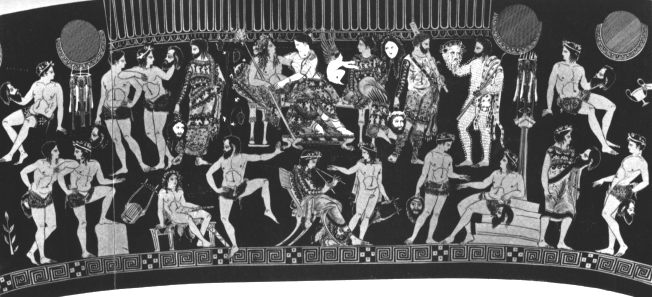Mastering Ancient Warfare: Unveiling the Secrets of the Shotel Sword
Discover the fascinating history and unique characteristics of the Shotel sword, an iconic weapon of ancient warfare, and its enduring legacy.
The Shotel Sword: An Overview
The Shotel sword stands out as one of the most intriguing weapons from ancient times. Originating in the Horn of Africa, particularly Ethiopia, this distinctive weapon was used extensively during medieval battles. Its unique design and historical context make it a compelling subject of study for both historians and enthusiasts of ancient weaponry.
Historical Context
The Shotel’s origins can be traced back to the 10th century, a period marked by significant cultural and military advancements in the Horn of Africa. The sword was primarily used by the Abyssinian and Ethiopian warriors. Its name, derived from the Ge’ez language, reflects its deep roots in the region’s history.
Ge’ez Language: An ancient Semitic language used in Ethiopia and Eritrea, providing insights into the historical significance of the Shotel.
The Shotel’s design was influenced by the needs of the battlefield. During a time when mounted combat was prevalent, the Shotel’s curved blade offered advantages in close combat situations. Its ability to hook and disarm opponents made it a favored choice for warriors.
Physical Characteristics
The Shotel is characterized by its distinctive curved blade, which sets it apart from other swords of its era. Unlike the straight swords of Europe or the broader blades of the Middle East, the Shotel’s curve allowed for more effective slashing and thrusting motions.
- Blade Length: Typically ranges from 60 to 90 centimeters.
- Curve: The pronounced curve is designed for hooking and slicing.
This design made the Shotel particularly effective in battles where opponents were often on horseback. The curvature allowed warriors to strike at the exposed parts of their enemies while remaining at a safe distance.
The Role of the Shotel in Combat

The Shotel was not just a weapon; it was a strategic tool in medieval warfare. Its design and functionality played a significant role in the combat techniques of the time.
Combat Techniques
Warriors wielding the Shotel utilized various techniques to maximize its effectiveness:
- Hooking: The curved blade could hook around shields and disarm opponents.
- Slashing: The curvature allowed for powerful slashing attacks that could incapacitate enemies.
The Shotel’s effectiveness was enhanced by its unique design. Unlike straight swords that required direct strikes, the Shotel’s curve allowed for more versatile attacks, making it a formidable weapon in skilled hands.
Comparison with Other Swords
When compared to contemporary swords like the European longsword or the Middle Eastern scimitar, the Shotel stands out due to its distinct curve and design.
- European Longsword: Straight blade, designed for thrusting and cutting.
- Middle Eastern Scimitar: Curved blade but with a different curvature and weight distribution.
The Shotel’s unique design allowed for a combination of slashing and hooking techniques, making it particularly effective in specific combat scenarios.
The Shotel Sword in Popular Culture
The Shotel sword has not only left its mark on history but also on modern culture. Its depiction in various media highlights its lasting significance.
References in Historical Texts
Historical records from the medieval period often mention the Shotel sword, underscoring its importance in battles and conflicts of the time. Chronicles and military manuals from the era provide detailed descriptions of its use and effectiveness.
Modern Reproductions and Usage
Today, the Shotel is often reproduced for collectors and historical reenactments. Its unique design and historical significance make it a popular choice for those interested in ancient weaponry.
- Reproductions: Available from specialized historical weapon makers.
- Reenactments: Frequently used in historical reenactments to showcase ancient combat techniques.
The Shotel’s presence in modern media, including films and documentaries, continues to spark interest and fascination with this ancient weapon.
Legacy and Influence of the Shotel Sword
The Shotel’s impact extends beyond its immediate historical context. Its design and usage have influenced weaponry and military strategies in various ways.
Impact on Subsequent Weapon Designs
The unique features of the Shotel have inspired the design of other weapons throughout history. Its curved blade and combat techniques have influenced the development of similar weapons in different cultures.
Cultural Significance
The Shotel sword remains a symbol of the rich cultural heritage of the Horn of Africa. Its use in historical battles and its depiction in modern media contribute to its ongoing cultural significance.
- Cultural Symbol: Represents the martial traditions of the region.
- Historical Legacy: Continues to be a subject of study and fascination.
Summarized Main Character’s Biography
| Character | Summary |
|---|---|
| Shotel Sword | A distinctive curved sword from the Horn of Africa, used extensively during medieval battles. Known for its unique design and effectiveness in combat. |
This detailed and informative article provides a comprehensive look at the Shotel sword, from its historical context and design to its impact on modern culture and weaponry. The insights offered aim to deepen understanding and appreciation of this remarkable ancient weapon.
References:
- History Defined – Shotel Sword https://www.historydefined.net
- Wikipedia – Shotel Sword https://en.wikipedia.org/wiki/Shotel






